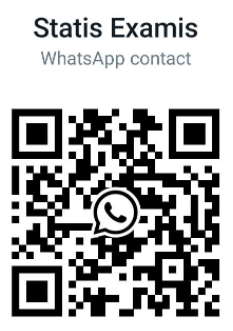Navigation » List of Schools » California State University Dominguez Hills » Science, Mathematics and Technology » SMT 314 – Introduction to Cosmology » Fall 2020 » Exam 2
Question #1
A Is caused by the “backward” rotation of Venus about its own axis
B Is caused by the change in perspective as Venus catches up with, and passes, Earth while both planets orbit the Sun
C Is caused by the motion of Venus along an epicycle whose center orbits the Sun
D Was used by Galileo to explain the complete set of phases of Venus that he observed through his telescope
E Is caused by the gravitational tug of other planets on Venus
Question #2
A Neptune
B Jupiter
C Saturn
D Uranus
Question #3
A FALSE
B TRUE
Question #4
A longer than an Earth day
B less than an hour
C less than an Earth day
D many Earth days
Question #5
A all of these choices
B none of these choices
C planets 1 AU from their star
D planets with an oxygen atmosphere
E planets that could have liquid water
F planets with a rocky surface
Question #9
A The giant planets consist mostly of hydrogen and helium,
B Saturn’s rings rotate as a solid body, like a bicycle wheel and its spokes; all particles have the same orbital period.
C Of the four giant planets, only Saturn and Uranus have rings.
D Jupiter’s volume is roughly 10 times Earth’s volume
E Neptune and Uranus appear greenish blue because they are covered by a liquid water ocean
Question #10
A closer
B the same distance
C now way to tell with available data
D farther
Question #12
A Earth
B Venus
C Mercury
D Mars
Question #13
A It’s orbit is not clear of other orbiting objects.
B It doesn’t revolve about the Sun like planets.
C It fell into Neptune when their orbits crossed.
D If it was a distant planet, it would be a gas giant planet.
Question #14
A between the Sun and Mars.
B tidally-disrupted icy rock debris between Mars and Jupiter.
C randomly distributed throughout the solar system.
D among comets in the Oort cloud, beyond Neptune.
Question #15
A the Doppler-wobble method
B astrometric measurements
C gravitational microlensing
D direct imaging
E the transit method
Question #17
A the Moon has been around longer than the Earth and has been exposed to more periods of meteor bombardment.
B the Moon is more distant than the Earth, causing incoming rocks to hit it first.
C the Moon experiences frequent volcanic eruptions that cause craters.
D the Moon is much more deficient in iron relative to the Earth, causing craters to form more easily.
E the Moon experiences almost no erosion compared to the Earth, causing craters to remain much longer.
Question #18
A The orbital period of the Moon around the Earth and the rotation period of the Moon around its axis are equal.
B By observing the Moon long enough from Earth, night after night, we are able to draw a map of its entire surface.
C The same half of the Moon’s surface is perpetually dark (craters on that side never see sunlight), leading us to call it the “dark side of the Moon.”
D High tide occurs on the side of the Earth nearest to the Moon, while low tide occurs on the opposite side of the Earth.
E At any given location on Earth, there are two high tides each day – one caused by the gravitational pull of the Sun, and the other by the gravitational pull of the Moon.
Question #19
A TRUE
B FALSE
Question #20
A Formation of the Jovian Planets,Formation of the Terrestrial Planets,Formation of the protosun,Ignition of the Sun,Late Heavy Bombardment
B Formation of the protosun,Formation of the Jovian Planets,Formation of the Terrestrial Planets,Ignition of the Sun,Late Heavy Bombardment
C Ignition of the Sun,Formation of the protosun,Formation of the Jovian Planets,Formation of the Terrestrial Planets,Late Heavy Bombardment
D Formation of the protosun,Ignition of the Sun,Formation of the Jovian Planets,Formation of the Terrestrial Planets,Late Heavy Bombardment
Question #21
A Mercury,Venus,Earth,Mars,Asteroid Belt,Jupiter,Saturn,Uranus,Neptune,Kuiper Belt
B Neptune,Saturn,Mercury,Venus,Earth,Mars,Jupiter,Uranus,Kuiper Belt,Asteroid Belt
C Kuiper Belt,Mercury,Earth,MarsVenus,Jupiter,Uranus,Neptune,Saturn,Asteroid Belt
D Mercury,Asteroid Belt,Venus,Earth,Mars,Kuiper Belt,Jupiter,Saturn,Uranus,Neptune,
Question #22
A a captured comet
B early solar system gas & dust
C Sun ejecta
D a collision with a rogue planet
E a chunk broke off of the Earth
Question #23
A Mars
B Mercury
C Venus
D Uranus
E Jupiter
Question #24
A helium
B nitrogen
C ammonia
D methane
E hydrogen
Question #26
A TRUE
B FALSE
Question #27
A Earth
B Uranus
C Venus
D Mars
Question #28
A Despite their size, they rotate about their axis very rapidly, in fewer than 24 hours.
B They have many moons, probably due to their large gravitational fields.
C They generally have the thickest atmospheres of all the planets in the Solar System
D They are the largest of all planets in the Solar System, with diameters up to nearly 1/10 the diameter of the Sun.
E They are the most massive of all the planets in the Solar System since they are mainly composed of heavy elements like iron.
Question #29
A Objects smaller than comets; most between Mars and Jupiter.
B Groupings of stars in the sky that are smaller than constellations.
C Any astronomical object.
D Meteorites falling on a radiant from the Perseid star cluster.
Question #30
A Earth’s mantle consists of stacked rock plates
B continents shifting over a convecting mantle
C lava erupts at random
D earthquake map
Question #31
A At a given time, a total lunar eclipse is visible only from a small part of the Earth’s surface.
B Total lunar eclipses last longer than total solar eclipses
C Lunar eclipses don’t occur monthly, because the inclination of the Moon’s orbit around the Earth relative to the Earth’s orbit around the Sun.
D The Moon is still visible during a total lunar eclipse because of light going through the Earth’s atmosphere.
E Lunar eclipses are predictable.
Question #32
A coma
B nucleus
C dust tail
D ion tail
Question #33
A FALSE
B TRUE
Question #34
A there is too much material to have fit into the ball of each planet
B tidal forces cause volcanic eruptions on some moons, and part of this material subsequently escaped the gravity of the moons, forming the rings.
C Jovian planets rotate very rapidly, and some material near the equator of these planets was flung outward, forming the rings
D tidal forces prevent the material in rings from forming into moons
E their thick gaseous atmospheres would disintegrate any small rock that enter them
Question #36
A TRUE
B FALSE
Question #38
A No greenhouse effect currently occurs on Earth, and this is a good thing for humans.
B If we dump much more carbon dioxide in Earth’s atmosphere, Earth will become hotter because of the greenhouse effect.
C An extreme, possible runaway, greenhouse effect occurred on Venus, making its planetary surface the hottest in the Solar System.
D Venus’s atmosphere is much thicker than that of Earth – but some of Earth’s gases are trapped in rocks and oceans.
E The greenhouse effect occurs when an atmosphere is transparent to optical or visible light but translucent to infrared light, thus trapping the heat.
Question #39
A FALSE
B TRUE
Question #40
A The rotation axis is almost in line with the solar ecliptic
B The planet rotates once every 243 days, but the atmosphere rotates faster.
C The planet rotates once every 2/3 revolution about the Sun.
D The rotation is counter-clockwise.
Question #41
A comets burn quite rapidly, using up all their fuel within a few decades
B it is impossible to tell when most comets will return close to the Sun
C most comets only pass close to the Sun 2 or 3 times, and then they disintegrate
D comets are not gravitationally bound to our Solar System
E orbits of comets are highly eccentric and their semimajor axes are large
Question #42
A nucleus
B coma
C ion tail
D dust tail
Question #43
A gravitational attraction to astronomical objects
B periodic sloshing of liquid water.
C none of these
D ocean storms & weather
Question #44
A TRUE
B FALSE
Question #45
A a hurricane
B a volcanic eruption
C an atmospheric disturbance where a comet landed years ago.
D a tidal instability




